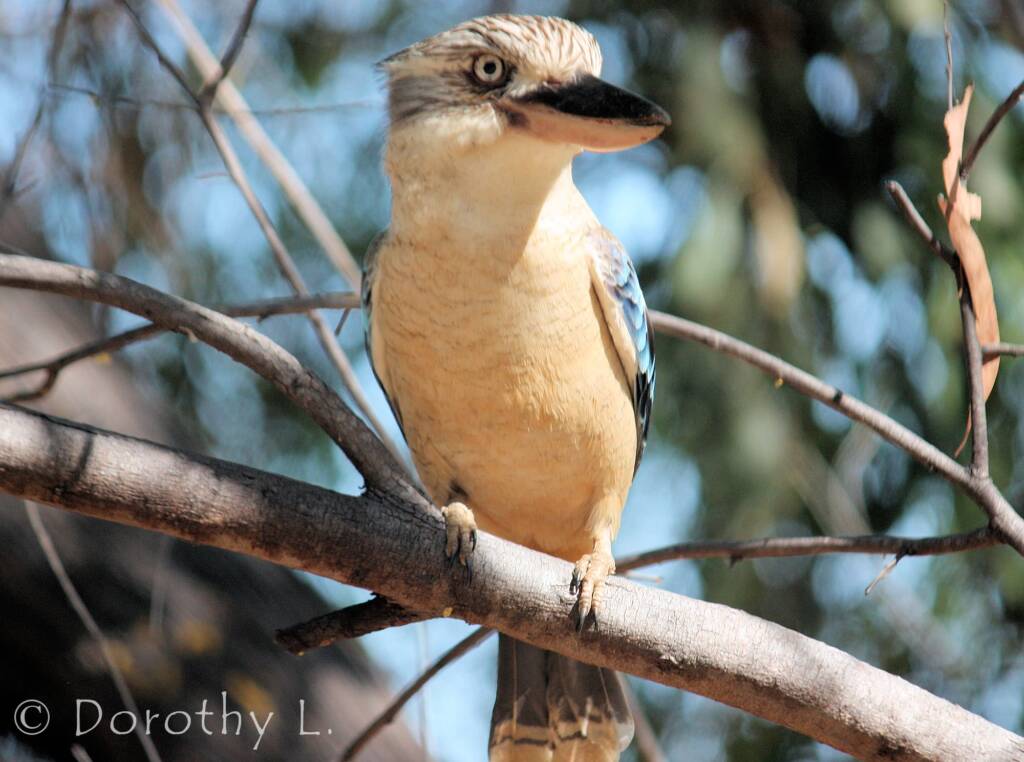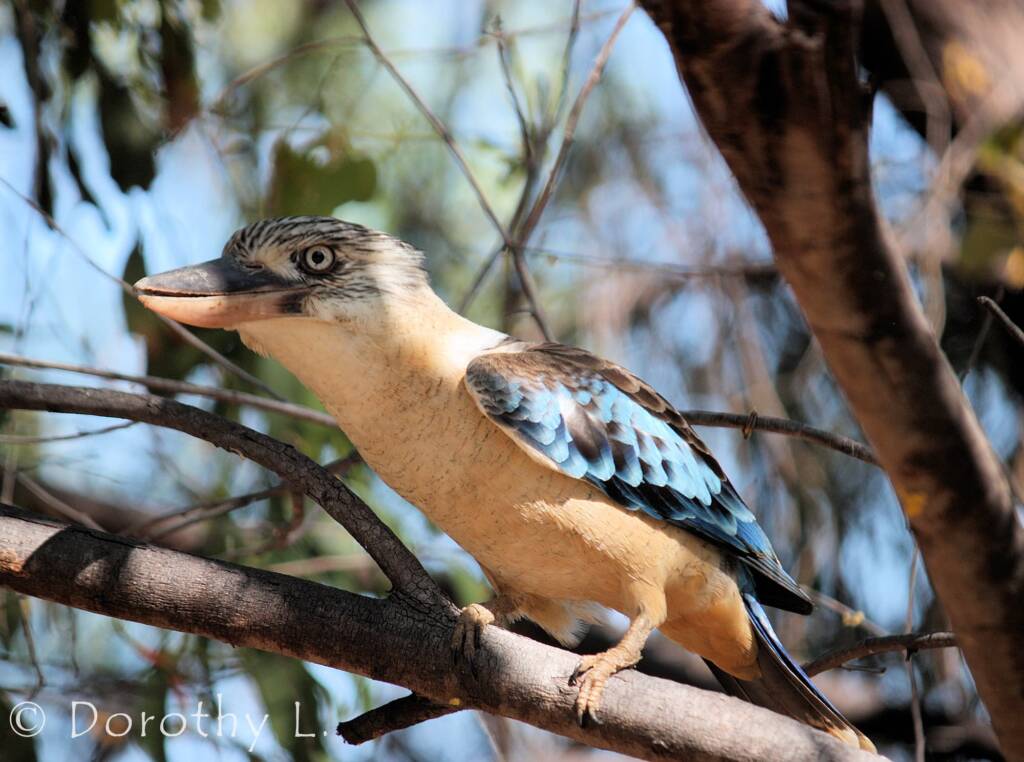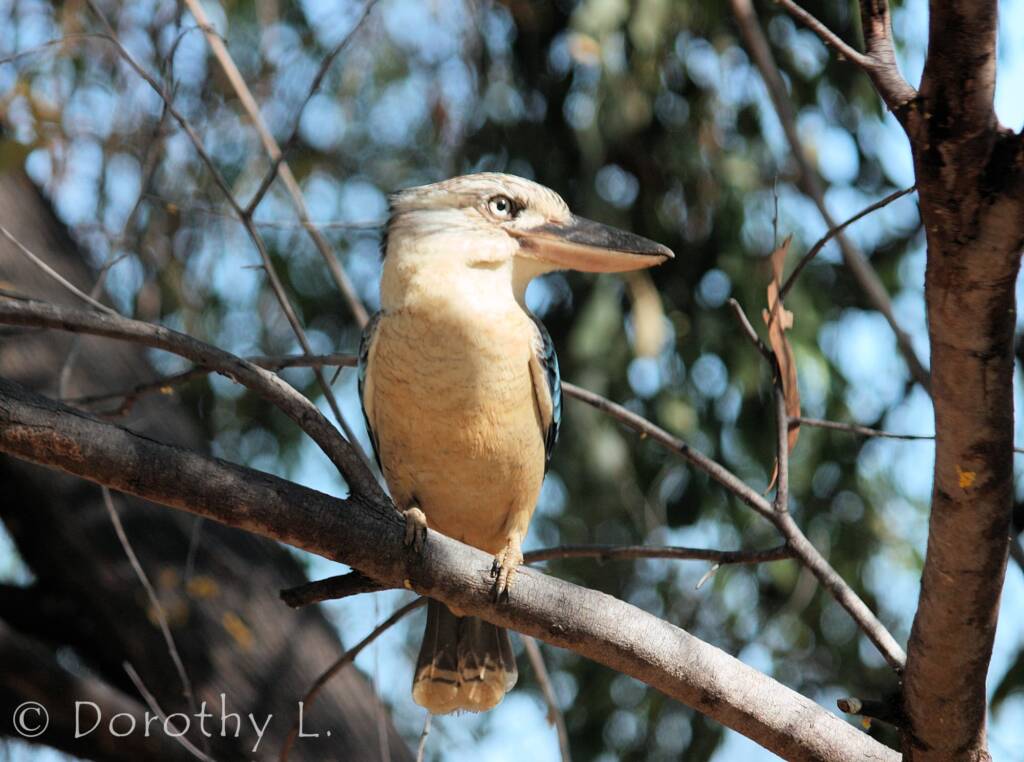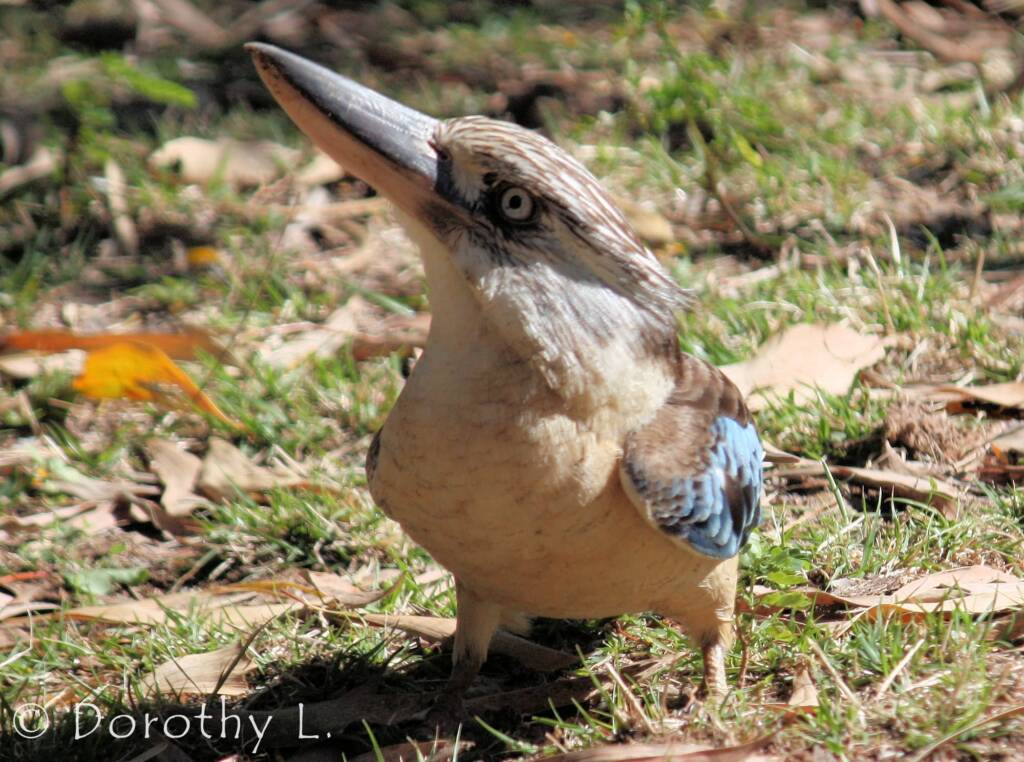Blue-winged KookaburraBlue-winged Kookaburra – perched
The Blue-winged Kookaburra (Dacelo leachii) is a large species of the kingfisher group that is native to northern and north-eastern Australia, where they are found in the Gulf Country of Queensland extending South to Toowoomba and west across the top end of Western Australia. They are also found in the Torres Strait and southern New Guinea. Their range overlap with the Laughing Kookaburra, who are in the northern and eastern Queensland, as both species will inhabit the same forested regions.

Both the Blue-winged Kookaburra and Laughing Kookaburra have a loud, raucous cackling call that is described as an ‘extended maniacal laughter’, although it is said that the Blue-winged Kookaburra’s laughter ‘lacks the same sense of humour’.
First collected by Sir Joseph Banks in 1770, the Blue-winged Kookaburra one of four species belonging to the genus Dacelo, commonly known as kookaburras.

It is sexually dimorphic (the sexes are represented in two distinct forms), the male bird have a dark blue tail, whilst the female bird have a rufous red-brown tail with blackish bars. They have a head and underparts that are cream to very light pale orange-brown in colour, with brownish streaks. They have grey legs and feet, with a dark upper bill and yellowish lower bill. The juvenile bird have a paler streaked head markings, prominent brown bars and darker mottling’s in the plumage. Their eyes are predominantly brown for the first couple of years of life, becoming pale.

The Blue-winged Kookaburras eat a range of invertebrates and vertebrates that include insects, scorpions, spiders, snakes, earthworms, reptiles, frogs, fish, crayfish, small birds and mammals. Their bill has a special groove near the end of the upper mandible that help with holding the prey. On returning to a perch, they beat the prey against the perch before swallowing it.
The breeding season is between September to January. They nest high in trees, in natural tree hollows or cutting a hole into the soft wood of a baobab tree. They are also known to use tree termite nests. The floor of the nest chamber is lower then the entrance, with both parents sharing the incubation and feeding of the young. They are often assisted with the feeding by the previous years clutch. They are sometimes seen in family groups of up to 12 birds.
Common name
Barking or Howling Jackass, Leach’s Kookaburra.


- Scientific classification
- Domain: Eukaryota
- Kingdom: Animalia
- Phylum: Chordata
- Class: Aves
- Order: Coraciiformes
- Family: Alcedinidae
- Subfamily: Halcyoninae
- Genus: Dacelo
- Species: D. leachii
- Binomial name: Dacelo leachii
Blue-winged KookaburraBlue-winged Kookaburra – perched
KingfishersAzure Kingfisher Blue-winged Kookaburra Forest Kingfisher Laughing Kookaburra Red-backed Kingfisher Sacred Kingfisher Torresian Kingfisher
BirdsApostlebird Australasian Darter Australasian Figbird Australasian Gannet Australasian Grebe Australasian Pipit Australasian Robins Australasian Shoveler (Spatula rhynchotis) Australasian Wrens Australian Babblers Australian Bustard Australian Chats Australian Magpie Australian Pelican Australian Pratincole (Stiltia isabella) Australian White Ibis Bassian Thrush Black-faced Cormorant Black-faced Woodswallow Black Swan Bowerbirds Brolga Brown Songlark Channel-billed Cuckoo Cinnamon Quail-thrush Cormorants Cuckooshrikes and Allies Dotterels Lapwings Plovers Doves & Pigeons Emu Fairy Martin Finches Grey Fantail Grey Teal Honeyeaters Kingfishers Little Friarbird Little Grassbird Magpie-lark Masked Woodswallow Noisy Pitta Olive Whistler Paradise Riflebird Pardalotes Parrots Pheasant Coucal Pied Butcherbird Rainbow Bee-eater Raptors Rufous Fantail Redthroat Rufous Bristlebird Silver-crowned Friarbird Torresian Crow Waders Welcome Swallow (Hirundo neoxena) Whiskered Tern (Chlidonias hybrida) White-browed Woodswallow White Capped Noddy White-faced Heron White-necked Heron Willie Wagtail Yellow-throated Scrubwren
